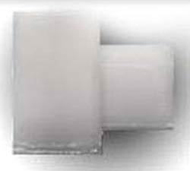| |
Waxes
|
| |
| |
|
| Bees Wax |
|

|
Beeswax is a natural wax produced in the bee hive of honey bees of the genus Apis. It is mainly esters of fatty acids and various long chain alcohols. Typically, for a honey bee keeper, 10 pounds of honey yields 1 pound of wax. |
| |
 |
| |
|
|
|
| |
| |
|
| Carnauba Wax |
|
 |
Carnauba, also called Brazil wax and palm wax, is a wax of the leaves of the palm Copernicia prunifera, a plant native to and grown only in the northeastern Brazilian states of Piauí, Ceará, and Rio Grande do Norte. It is known as "queen of waxes" and usually comes in the form of hard yellow-brown flakes.
It is obtained from the leaves of the carnauba palm by collecting them, beating them to loosen the wax, then refining and bleaching the wax. |
| |
 |
| |
|
|
|
| |
| |
|
| Emuliifying Wax |
|
 |
Emulsifying wax is a cosmetic emulsifying ingredient. The ingredient name is often followed by the initials NF, indicating that it conforms to the specifications of the National Formulary. Emulsifying wax is created when a wax material (either a vegetable wax of some kind or a petroleum-based wax) is treated with a detergent (typically sodium dodecyl sulfate orpolysorbates) to cause it to make oil and water bind together into a smooth emulsion.
It is a white waxy solid with a low fatty alcohol odor. The ingredients for Emulsifying Wax NF are: Cetearyl Alcohol, Polysorbate 60, PEG-150 Stearate, and Steareth-20. It has the characteristics of cetyl alcohol combined with the viscosity building effect of stearyl alcohol as an effective thickener and helps form stable emulsions. |
| |
 |
| |
|
|
|
| |
| |
|
| Micro Wax |
|
 |
Microcrystalline waxes are a type of wax produced by de-oiling petrolatum, as part of the petroleum refining process. In contrast to the more familiar paraffin wax which contains mostly unbranched alkanes, microcrystalline wax contains a higher percentage of isoparaffinic (branched) hydrocarbons and naphthenic hydrocarbons.
It is characterized by the fineness of itscrystals in contrast to the larger crystal of paraffin wax. It consists of high molecular weight saturated aliphatic hydrocarbons. It is generally darker, more viscous, denser, tackier and more elastic than paraffin waxes, and has a higher molecular weight and melting point. The elastic and adhesive characteristics of microcrystalline waxes are related to the non-straight chain components which they contain.
Typical microcrystalline wax crystal structure is small and thin, making them more flexible than paraffin wax. It is commonly used in cosmeticformulations. |
| |
 |
| |
|
|
|
| |
| |
|
| Paraffin Wax |
|
 |
Paraffin wax (or simply "paraffin", but see alternative name for kerosene, above) is mostly found as a white, odorless, tasteless, waxy solid, with a typical melting point between about 47 °C and 64 °C ( 117°F to 147°F), and having a density of around 0.9 g/cm3. It is insoluble in water, but soluble in ether, benzene, and certain esters. Paraffin is unaffected by most common chemical reagents, but burns readily.
Pure paraffin wax is an excellent electrical insulator, with an electrical resistivity of between 1013 and 1017 ohm metre. This is better than nearly all other materials except some plastics (notably teflon). |
| |
 |
| |
|
|
|
| |
|
|